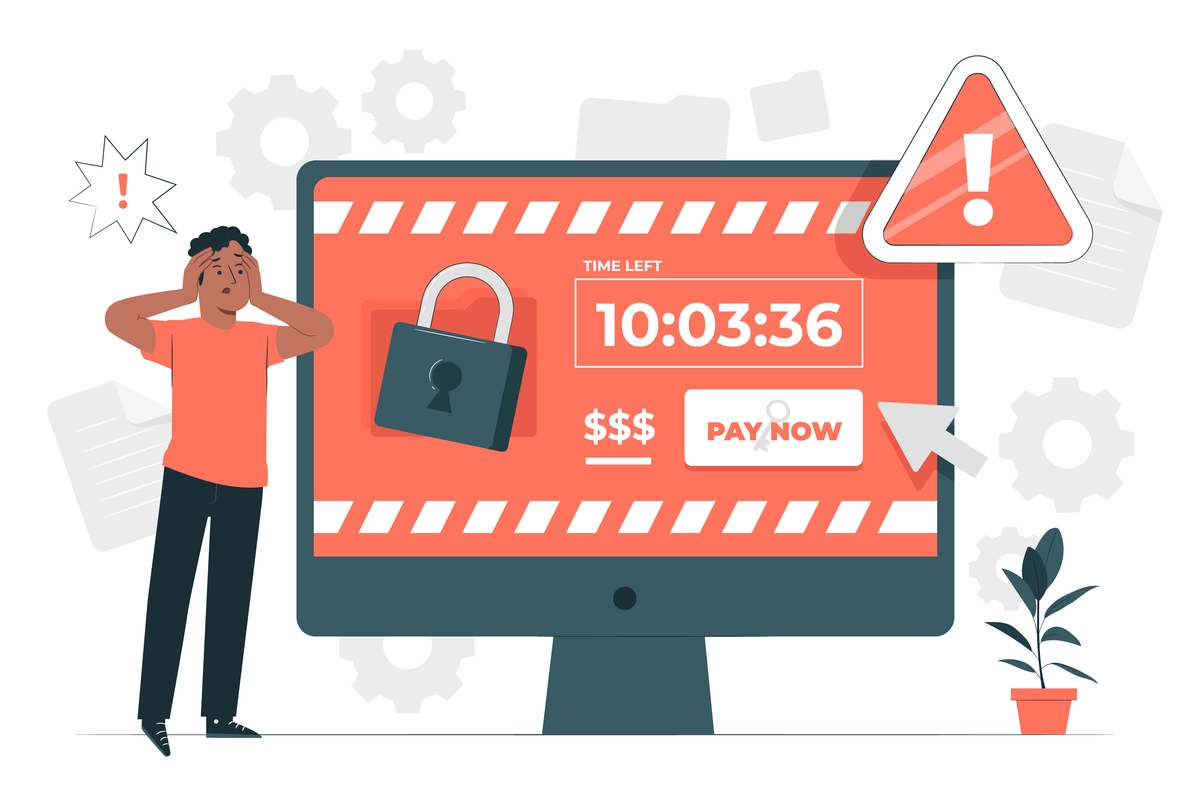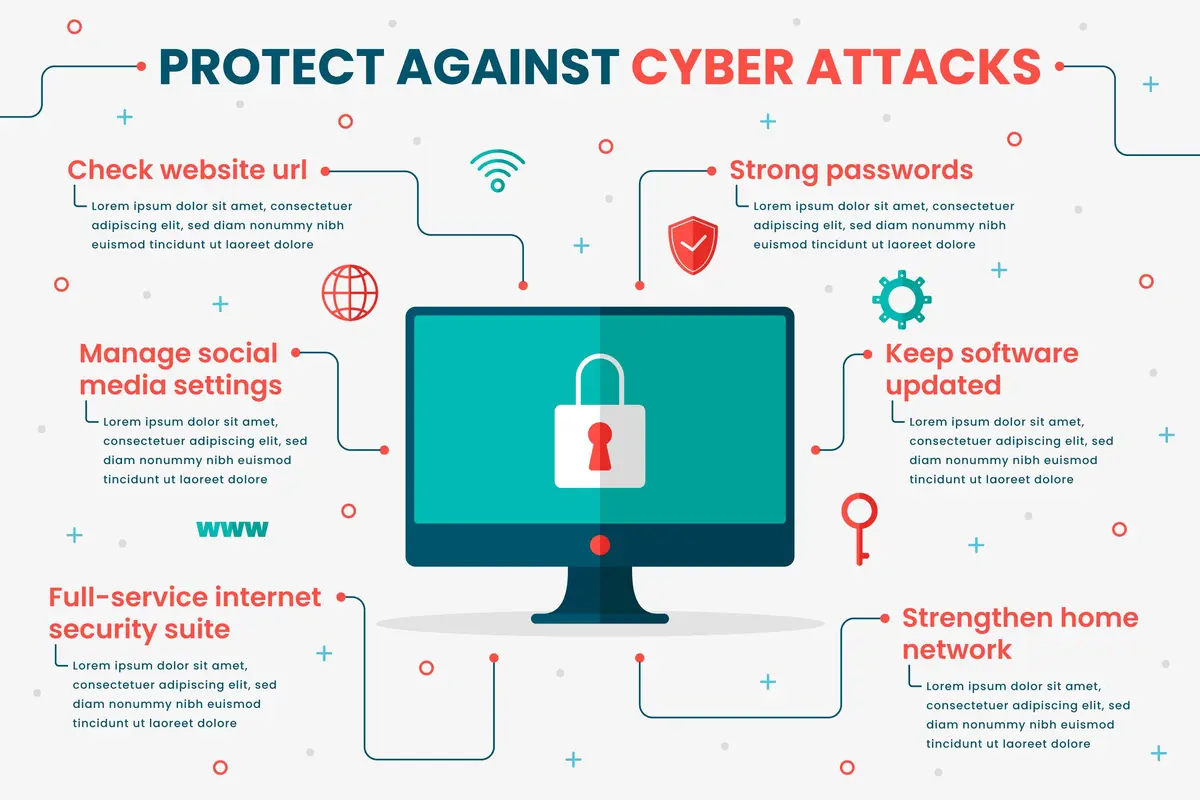Ransomware is a malicious virus that blocks access to your computer or files until you pay a ransom. This type of cyber attack has become increasingly common and poses a significant threat to businesses and individuals. Falling victim to a ransomware attack can lead to severe financial losses and damage your organization’s reputation. To protect yourself, it’s essential to understand how ransomware works and take proactive steps to prevent it.

How Ransomware Works
Ransomware typically spreads through various channels, including email phishing campaigns, social engineering tactics, or exploiting vulnerabilities in software or operating systems. Attackers employ clever techniques to deceive users into opening infected attachments or clicking on malicious links. These can appear as legitimate emails from trusted sources or websites, tricking users into unknowingly downloading and executing the ransomware.
Once the ransomware infects a system, it starts its malicious activities. It begins by scanning the targeted system for valuable files, searching for documents, images, databases, and other files that users frequently access or that hold significant value to the organization.
The next step is encryption, where the ransomware uses advanced cryptographic algorithms to scramble the files, rendering them inaccessible without the unique decryption key. The encryption process transforms the file’s contents into an unreadable format, making it impossible to open, edit, or use the files in any way.
After encrypting the files, the ransomware typically presents a ransom note to the victim. This note provides instructions on how to make the ransom payment, usually in the form of cryptocurrency, such as Bitcoin, to the attackers. The note may include threats of permanent data loss, deletion, or publication if the ransom is not paid within a specific timeframe.
It’s important to note that paying the ransom does not guarantee the recovery of your files or the removal of the ransomware from your system. There have been cases where victims paid the ransom but did not receive the promised decryption key or experienced repeated attacks even after payment.
It is crucial to stay informed about the latest ransomware trends and tactics used by attackers. By understanding how ransomware operates and the methods employed to spread and infect systems, individuals and organizations can better protect themselves and implement appropriate preventive measures.
Ransomware is unique among cybercrime because in order for the attack to be successful, it requires the victim to become a willing accomplice after the fact
Prevention Strategies
Preventing ransomware attacks requires a combination of simple but effective measures. Here are some strategies to protect yourself:
- Keep software and operating systems up to date with the latest security patches and updates to minimize vulnerabilities.
- Practice safe email and web browsing habits. Exercise caution when opening email attachments or clicking on links, particularly from unknown or suspicious sources. Verify the authenticity of emails and websites before interacting with them. Implement email filters to block malicious attachments and employ web filters to prevent access to known malicious websites.
- Use strong passwords and enable two-factor authentication to prevent unauthorized access to your accounts and systems.
- Educate yourself and your employees about recognizing and avoiding phishing emails and other common cyber tricks. Awareness is crucial in preventing ransomware attacks.
- Regularly back up your important data and store it securely in an offsite location. This ensures that even if you fall victim to a ransomware attack, you can restore your data without paying the ransom.
- Install reliable security software that can detect and block ransomware threats. Antivirus and anti-malware solutions provide an additional layer of defense against ransomware attacks.
- Develop and practice an incident response plan to ensure a swift and effective response in case of a ransomware attack. This plan should outline the steps to identify, contain, and recover from an attack, as well as communicate with relevant stakeholders.
- Lastly, emphasize the importance of regular backup and restore tests. Testing the backup and restoration process helps ensure that your data is recoverable and the restoration is effective, providing peace of mind in the face of potential ransomware attacks
By implementing these prevention strategies, you can significantly reduce the risk of falling victim to ransomware and protect your critical data.

The Importance of Employee Education and Training
Ensuring that your employees are well-educated about ransomware is of utmost importance when it comes to preventing attacks. They serve as the first line of defense, and their awareness and vigilance can make a significant difference in thwarting potential threats. It is crucial to provide comprehensive training programs that equip them with the knowledge and skills to identify phishing emails, avoid falling for social engineering tactics, and promptly report any suspicious activity they encounter. By empowering your employees through education, you strengthen your organization’s overall cybersecurity posture and create a united front against ransomware attacks.
Incident Response Plan
A well-defined incident response plan plays a critical role in effectively handling ransomware attacks. It serves as a roadmap that guides your organization’s response when faced with such threats. The plan should outline clear and actionable steps to identify and contain the attack, minimize the damage, and restore affected systems and data from secure backups. Additionally, it should include protocols for communicating with relevant stakeholders, such as customers and employees, to maintain transparency and mitigate any potential reputational harm. Regularly reviewing and updating the incident response plan ensures that it remains aligned with the evolving threat landscape, enabling your organization to respond swiftly and effectively to ransomware incidents should they occur.
In conclusion, it is crucial to understand the mechanics of ransomware and take proactive measures to protect your data. Ransomware attacks continue to pose a significant risk to businesses and individuals, but by implementing simple prevention strategies, you can significantly reduce the likelihood of falling victim to such attacks. Keep your software up to date, educate yourself and your employees about common cyber threats, regularly back up your data, and have a well-practiced incident response plan in place. By prioritizing cybersecurity and staying vigilant, you can safeguard your critical information and mitigate the devastating impact of ransomware attacks. Remember, prevention is key when it comes to ransomware, and investing time and resources in securing your systems today can save you from the potential consequences of an attack tomorrow.
Ready for a successful tech journey? Contact us at All Star Tech today. Our team provides comprehensive services for software development, web design, and all tech-related endeavors. Let’s transform your ideas into reality with expert guidance. Reach out now; we look forward to hearing from you! Contact us at AST.




